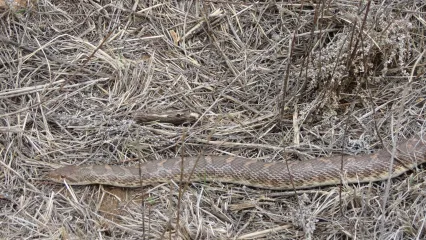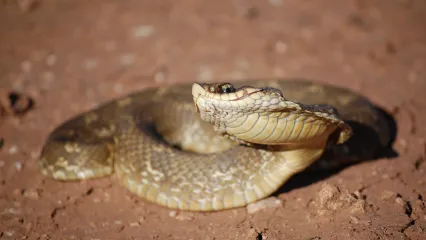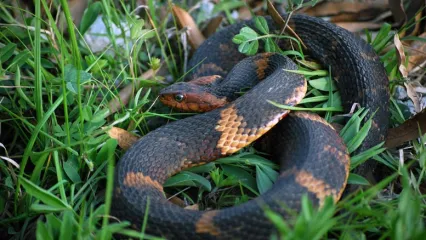
Description
Within the towering forests of southeastern Oklahoma basks a unique lizard. It can change colors, move its eyes independently of one another and males can extend a pink dewlap, or fold of skin under the jaw, to attract females. This mystery lizard is a northern green anole, the only native species of anole found in the continental United States. Oftentimes, the green anole is, as the name suggests, green. But depending on temperature or “emotional state,” this lizard can be green, mottled green and brown, or all brown. (This flair for camouflage has led to the misnomer of “chameleon.” Chameleons are not native to the United States and are much more adept at color change than this native anole.) In addition to the ability to change colors, the green anole can be identified by its long, tapered face and wide, ridged toes. These specialized toes allow the anole to climb many surfaces – including glass – with ease.
Size
5-8 inches long.
Habitat
Northern green anoles are found across the southeastern United States, but are only found in the southeastern corner of Oklahoma. They are often seen around houses and backyards, and are frequently found in trees and shrubs.
Life Cycle
To attract a mate, the male green anole has several rituals. One of the most obvious displays is the extension of a pink dewlap. The pink coloration is only noticeable when the dewlap is unfolded. More subtle, but no less impressive, are the pushups and head-bobbing of male green anoles when other males enter their territory. Unlike most Oklahoma lizards that lay one or two clutches of eggs per year, the northern green anole lays multiple, very small clutches of eggs through the summer. Anoles feed primarily on spiders and insects.


